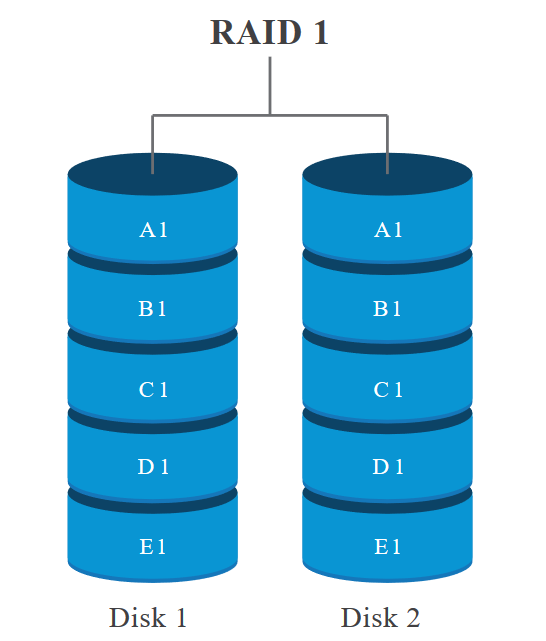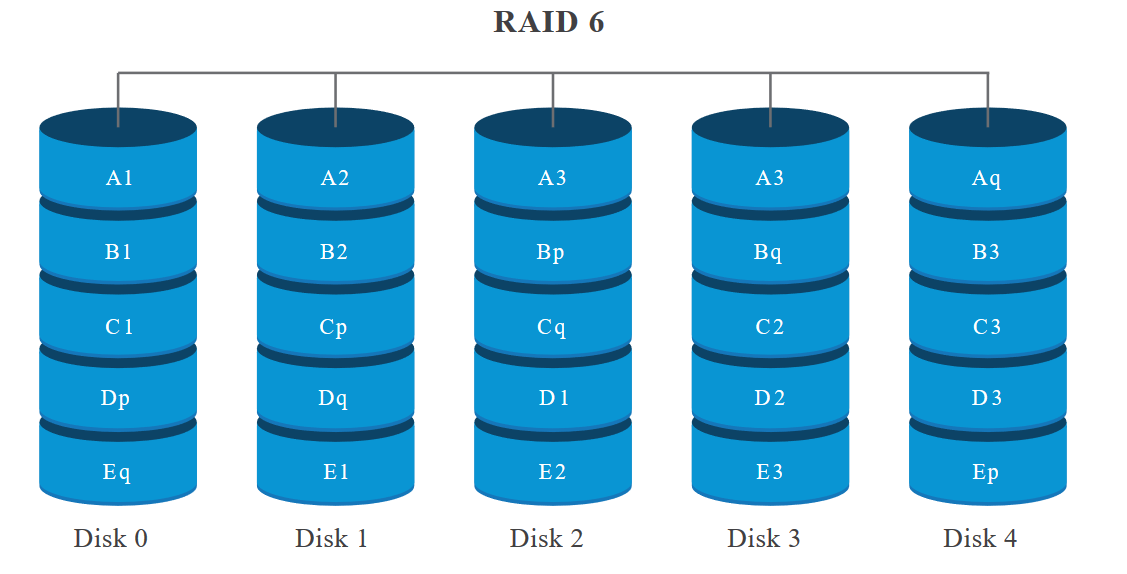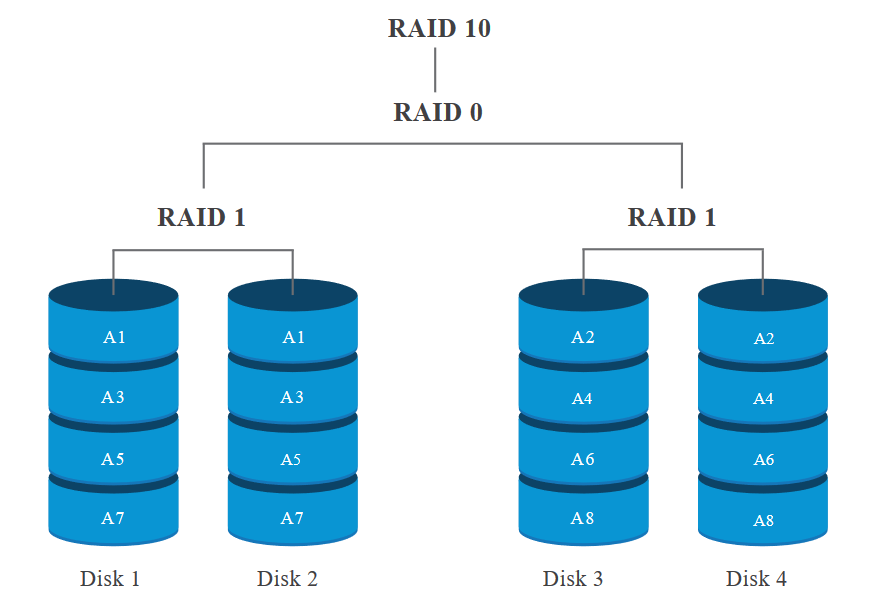Switch to dedicated servers has been at unprecedented level like never before. Reason is far clear as the evolving businesses leverages the power of bare metal dedicated servers to harness all the advantage offered at the table. Let’s look at the benefits of dedicated servers and how mid-sized companies can take advantage of them.
RAID can be simply defined as copying the original data to multiple hard disks which are kept in different places for safety measures. The abbreviation stands for either redundant array of independent disks or Redundant Array of Inexpensive Disks. RAID assures the protection of data from unwanted events like drive failure. RAID is a system where two or more hard disks are combined into a group and the OS sees them as a single volume. Mostly these are hard discs but nowadays there’s a trend of using the technology for Solid State Drives, in short SSD.
IN THIS POST
RAID have different levels, and every raid is optimized for a specific situation. RAID functionality could be enabled either by SOFTWARE or HARDWARE. Software can either be found on separate controller card or as a driver otherwise. Although some versions of Windows Servers and Mac OS X include software RAID but experience and performance from HARDWARE RAID is unmatched especially with RAID 5 and 6.
Some interfaces like SCSI, IDE, SATA or FC (fiber channel) are common for the use of RAID-systems. Some systems have a FireWire or SCSI-interface for the host system and they uses SATA disks internally.
JBOD, this abbreviation stands for ‘Just a Bunch Of Disks’. And JBOD defined as disks in a storage system. These disks act as a stand-alone disk as they don’t use a specific RAID level. The purpose behind using this is for the drives that have swap files or spooling data.
Most popular and standard RAID that are used in industries are here:-
- RAID 0 – striping
- RAID 1 – mirroring
- RAID 5 – striping with parity
- RAID 6 – striping with double parity
- RAID 10 – combining mirroring and striping
RAID Level 0 – Striping
Data are splits to blocks, called “stripes”. And after that, data are alternately written to two or more drives simultaneously to enhance the speed. With the help of multiple controllers, ideally one controller per disk I/O performance can be boosted.

Advantages
- In the term of performance, RAID 0 delivers a good example in both read and right operations. Parity control doesn’t initiate overhead.
- Implementation of technology is much easier.
- Without any overhead, all storage capacity is used.
Disadvantages
- The fault-tolerant level is nil. In the case of drive failure, all the data kept in RAID 0 are lost. That is why it is not wised to use RAID 0 for mission-critical systems.
Ideal use
It is suitable for non-crucial storage of data like image retouching or video edition station as they only needs to be read/written at a higher speed.
If you’re looking to use RAID 0 just for the purpose of combining the storage capacity of two individual drives into a single volume. Then you must consider mounting one drive in the folder path of the other drive. It is supported by most reliable OS like windows, Linux and even in OS X. It has the advantage that a single drive failure has no impact on the data of the second disk or SSD drive.
RAID Level 1 – Mirroring
Data are stored twice by writing them to both the data drive (and set of data drives) and a mirror drive (or set of drives). If a drive fails, the controller has the option to choose data from either the data drive or the mirror drive for data recovery and continues operation. You need at least 2 drives for a RAID 1 array.

Advantages
- RAID 1 has the advantage of excellent read and a write-speed that is akin to that of a single drive.
- In case a drive fails, data do not have to be rebuild, they just have to be copied to the replacement drive.
- RAID 1 is very easy to implement.
Disadvantages
- Effective data storage is reduced to half owing to twice writing of the same data.
- Software RAID 1 solutions limit hot swap of a failed drive. That means the failed drive can only be replaced after powering down the computer it is attached to. For servers that are used simultaneously by many people, this may not be acceptable. Such systems typically use hardware controllers that do support hot swapping.
Ideal use
RAID-1 is best suited for mission critical storage, for instance for accounting systems. It is also suitable for small servers in which only two data drives will be used.
RAID Level 5 – striping with parity
RAID 5 is the most common secure RAID level. It requires at least 3 drives but can work with up to 16. Data blocks are striped across the drives and on one drive a parity checksum of all the block data is written. The parity data are not written to a fixed drive, they are spread across all drives, as the drawing below shows. Using the parity data, the computer can recalculate the data of one of the other data blocks, should those data no longer be available. That means a RAID 5 array can withstand a single drive failure without losing data or access to data. Although RAID 5 can be achieved in software, a hardware controller is recommended. Often extra cache memory is used on these controllers to improve the write performance.

Advantages
- Owing to parity calculation Write Data transactions are bit slower while Read data transactions are very fast.
- If a drive fails, you still have access to all data, even while the failed drive is being replaced and the storage controller rebuilds the data on the new drive.
Disadvantages
- Throughput is impacted by Drive failures, although this is still acceptable.
- This is complex technology. If one of the disks in an array using 4TB disks fails and is replaced, restoring the data (the rebuild time) may take a day or longer, depending on the load on the array and the speed of the controller. If another disk goes bad during that time, data are lost forever.
Ideal use
RAID 5 is a good all-round system that delivers efficient storage with excellent security and decent performance. It is ideal for file and application servers that have a limited number of data drives.
RAID Level 6 – Striping with double parity
RAID 6 is like RAID 5, but the parity data are written to two drives. That means it requires at least 4 drives and can withstand 2 drives dying simultaneously. The chances that two drives break down at exactly the same moment are of course very small. However, if a drive in a RAID 5 systems dies and is replaced by a new drive, it takes hours or even more than a day to rebuild the swapped drive. If another drive dies during that time, you still lose all of your data. With RAID 6, the RAID array will even survive that second failure.

Advantages
- Like with RAID 5, read data transactions are very fast.
- If two drives fail, you still have access to all data, even while the failed drives are being replaced. So RAID 6 is more secure than RAID 5.
Disadvantages
- Write data transactions are slower than RAID 5 due to the additional parity data that have to be calculated. Drive failures have an effect on throughput, although this is still acceptable.
- This is complex technology. Rebuilding an array in which one drive failed can take a long time.
Ideal use
RAID 6 is a good all-round system that combines efficient storage with excellent security and decent performance. It is preferable over RAID 5 in file and application servers that use many large drives for data storage.
RAID Level 10 – combining RAID 1 & RAID 0
It is possible to combine the advantages (and disadvantages) of RAID 0 and RAID 1 in one single system. This is a nested or hybrid RAID configuration. It provides security by mirroring all data on secondary drives while using striping across each set of drives to speed up data transfers.

Advantages
- If something goes wrong with one of the disks in a RAID 10 configuration, the rebuild time is very fast since all that is needed is copying all the data from the surviving mirror to a new drive. This can take as little as 30 minutes for drives of 1 TB.
Disadvantages
- This proves to be a costly affair for the sake of data redundancy. Half of the storage capacity goes to mirroring.
What about RAID levels 2, 3, 4 and 7?
These levels do exist but are not that common (RAID 3 is essentially like RAID 5 but with the parity data always written to the same drive). This is just a simple introduction to RAID-systems. You can find more in-depth information on the pages of Wikipedia or ACNC.
RAID is no substitute for back-up!
All RAID levels except RAID 0 offer protection from a single drive failure. A RAID 6 system even survives 2 disks dying simultaneously. For complete security, you do still need to back-up the data from a RAID system.
- That back-up will come in handy if all drives fail simultaneously because of a power spike.
- It is a safeguard when the storage system gets stolen.
- Back-ups can be kept off-site at a different location. This can come in handy if a natural disaster or fire destroys your workplace.




